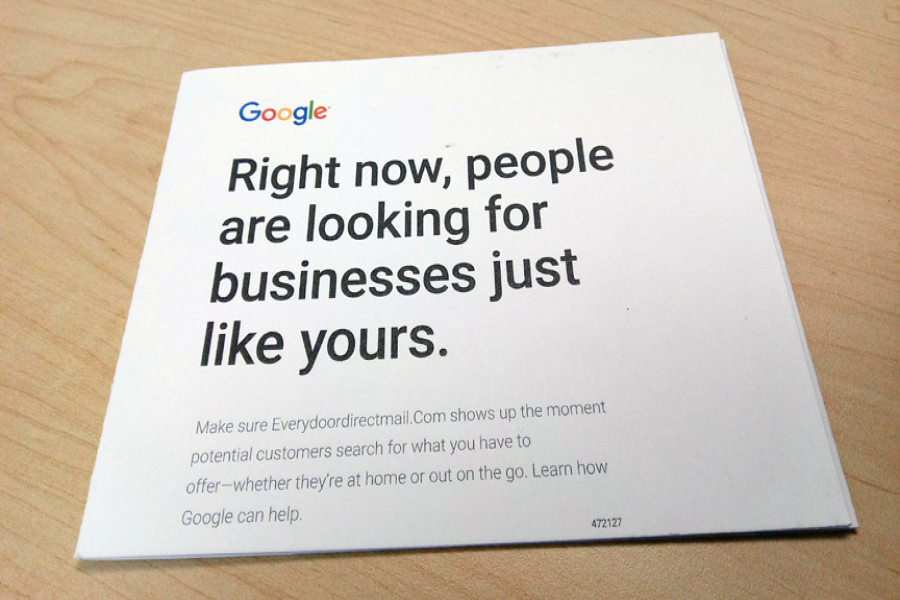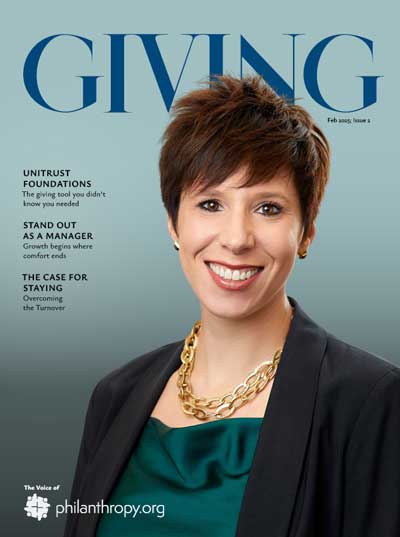So it’s settled. Direct mail is a good idea.
My husband and I run a small business. A very small business. So I was a little surprised to find out that we’re on Google’s mailing list. I’d understand if they sent me an email, or maybe a personalized video pop-up on YouTube. But no … the King of the Internet sent me a good old-fashioned letter, in a paper envelope, with a stamp, delivered by the postman. Yes, direct mail.
Actually, they’ve sent me several letters. Our business has been open for two years now, and we’ve received four or five pieces of direct mail from Google, all of which included a voucher for $50 or $100 towards Google AdWords.
So it got me thinking: if Google, a company that earned $50 billion in 2012, a company that gets 173 million unique visitors to its site in a single month, a company that dominates the market share in online searches, feels that direct mail is worthwhile … then it’s worthwhile.
I’m resisting the urge to e-blast our clients with another e-newsletter as I consider the following stats:
- 51% of U.S. consumers say they pay more attention to postal mail than email.
- Direct mail is 10 to 30 times more effective than email.
- 79% of consumers will act on direct mail immediately compared to only 45% who say they deal with email right away.
- 62% of Americans enjoy checking the mailbox for postal mail.
But probably you didn’t need stats to convince you. Most of us already know that email inboxes are flooded with junk. So it makes sense that direct mail stands out!
[Viken Mikaelian wrote a post with more current stats.]
So what’s the take-away for fundraisers? Let’s dissect the letter I got from Google to see what makes for a successful direct mailing.

1. It followed the Content is King principle.
There was nothing fancy or eye-catching about the mail I got from Google. It was just a white envelope with their logo. Inside was an AdWords voucher and a short paragraph of text telling me why and how to use it. That’s it.
Your direct mail piece doesn’t need to win an award for graphic design. The content is far more important than how it looks. Tell your reader exactly what you want them to do in clear, easy to understand language.
2. It was simple.
Google has a lot of services and products they could have offered me. They chose one.
K.I.S.S.: Keep It Simple Stu—. Well, you know how the acronym goes. Resist the urge to cram in too much information. Don’t ask the person for a planned gift, a year-end gift and invite them to a fundraising 5K run all in one postcard. Less is more. Keep it simple.
3. It gave me something valuable.
The Google AdWords voucher was something I could actually use. I felt like Google was givingme $100! Even the times I chose not to use the vouchers, it didn’t feel like junk mail.
Direct mail guru Ed Mayer is known for popularizing the 40/40/20 rule, which says that 40% of the success of a mail campaign is due to the offer or product. (More on the other 40 and 20 later.) If Google had sent me a postcard blabbering about what a great company they were and asking me to like their Facebook page (hm … does Google have a Facebook page?), I would have considered it junk and pitched it.
So as you prepare a mailing, consider what it is that you are offering the recipient. In some cases, it might be a product or service: a free brochure or a special invitation to an event. In other cases, it might be an emotional reward: the joy and security of establishing a legacy through a bequest.
4. It used the right mailing list.
When I got those letters from Google, we were a new business working to get our name out there. We had recently set up a website and registered it with Google Places. We were gaining traction online with a handful of online reviews. In other words, we were an ideal candidate to receive that piece of mail with an affordable option to help get our new business name more exposure online.
The right mailing list is essential to a successful mailing. Remember the 40/40/20 rule? That second 40% of the mail campaign’s success is due to the audience. Take the time to sift through your database and be intentional about what mail you’re sending to what people instead of blasting a generic message to a huge list.
(By the way: we have direct mail consultants standing to help you analyze your database, prioritize your prospects, and craft a plan for an effective and efficient mailing. The over-the-phone consultation is free. Call us at 800-490-7090.)
5. It was tied to an online action step.
The envelopes I got from Google included a voucher for AdWords. I used at least two of them.
You can get your prospects’ attention by showing up in their mailbox—then motivate them to take further action online where you can keep their attention longer and/or nudge them closer to making a gift. Maybe you send a promo code to enter on your website for a free brochure on how to write a will.
We can help you launch a successful direct mail campaign!
If you’re like most fundraisers, you juggle a lot of responsibilities and may be wondering how you can find the time to pull off a successful direct mail campaign. Good news! You don’t have to. We can do it all: planning, content development, design, printing, production—we’ll even send out the mail for you!
You can browse our eye-catching postcards here (they’re all fully customizable). Or if you want to kick around ideas for a mailing please feel free to call us at 1-800-490-7090.
Whether you work with us or launch a direct mail campaign on your own, we’d love to hear how it goes. Leave a comment here or email us at success@plannedgiving.com.
Sources:
1.
2. http://www.dmnews.com
3. http://www.cmocouncil.org
4. http://www.epsilon.com
Category: Giving, Planned Giving Marketing, Relationships



